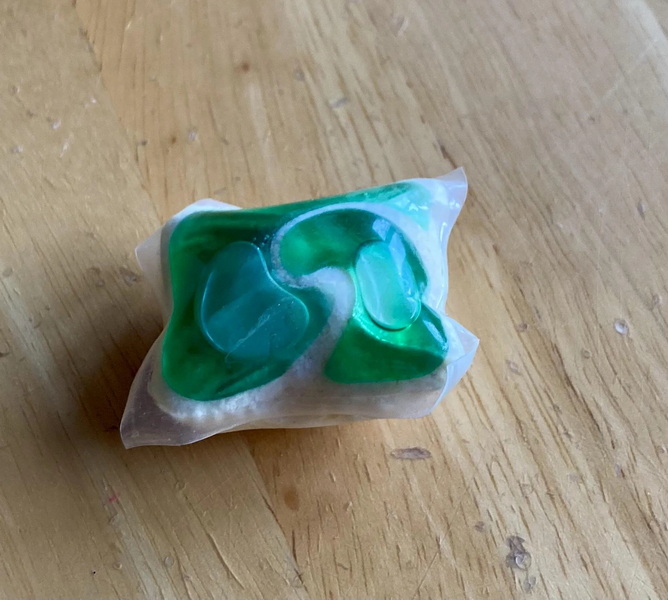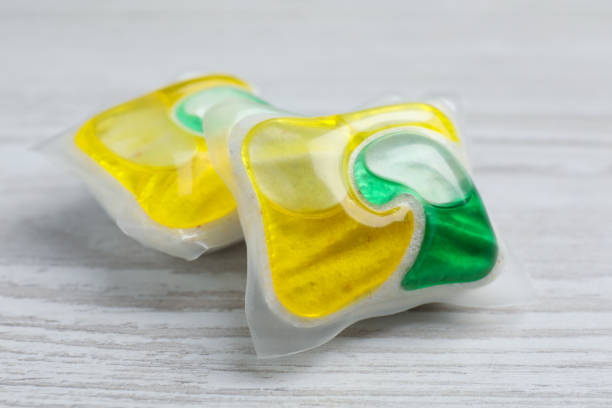Dongguan UFine Daily Chemical Co.,Ltd.
- All
- Product Name
- Product Keyword
- Product Model
- Product Summary
- Product Description
- Multi Field Search
Views: 222 Author: Tomorrow Publish Time: 11-04-2025 Origin: Site











Content Menu
● Step-by-step method: turning pods into liquid
● A more rigorous dissolution approach (for higher precision)
● Chemical and performance considerations
● Testing for consistency and safety
● Practical considerations and limits
● Alternatives to direct conversion
● Environmental and regulatory considerations
● Common questions and misconceptions
● FAQ
>> 1. Is it safe to convert laundry pods into liquid at home?
>> 2. Will the converted liquid detergent perform the same as store-bought liquid detergents?
>> 3. Can I reuse the original pod pouch after converting to liquid?
>> 4. How should I store the liquid detergent after conversion?
>> 5. Are there regulatory or environmental concerns with modifying detergent products?
In recent years, laundry pods have become a popular convenience for households seeking simple, pre-measured detergent. Some readers may wonder whether it is possible to convert these solid pod formats into liquid detergent for various reasons, such as custom dosing, compatibility with certain dispensers, or supply chain flexibility. This article examines the practical considerations, safety concerns, and step-by-step methods to turn laundry pods into a liquid form. It covers understanding the pod design, preparing for the conversion, testing consistency, and safeguarding against potential hazards. While the process can be feasible, it is essential to understand the limits of the equipment and the chemical formulation before attempting any modification. The goal is to empower readers with knowledge to make informed decisions about whether this conversion fits their needs and capabilities.

Laundry pods are multi-layered capsules that encapsulate concentrated detergent, surfactants, enzymes, and sometimes additives like brighteners or fragrances. The outer shell is typically a water-soluble polymer such as polyvinyl alcohol (PVA). When added to water, the capsule dissolves, releasing the contents. The formulation is designed for a single-use dosage, often tailored to standard wash loads. Key factors to consider when contemplating conversion include:
- Capsule material: The PVA shell is designed to dissolve in water but may behave differently in cold vs. warm water.
- Detergent composition: Pods may contain surfactants, enzymes, colorants, and sometimes bleaching agents.
- Dose accuracy: Pods are pre-measured for a typical load; adjusting concentration requires accurate measurement and testing.
- Stability: The concentrated contents are formulated for specific pH and water conditions, which can influence the final liquid's performance.
In addition to the shell and contents, several secondary factors influence conversion outcomes:
- Encapsulation technology: Some pods use complex layers to protect sensitive ingredients; disrupting this architecture can affect dissolution kinetics.
- Impurity profile: Pods may include fragrances or colorants that behave differently when dissolved in larger volumes or extended storage.
- Compatibility with machine dispensers: Some machines rely on the predictable dissolution curve of a pod; altering to a liquid form may require calibration of dosing systems.
Converting laundry pods into liquid introduces potential hazards that must be managed carefully:
- Chemical exposure: Detergents can irritate skin, eyes, and mucous membranes. Wear gloves and eye protection when handling pods and liquids.
- Concentration risk: The resulting liquid may be more concentrated than standard detergents, increasing the risk of skin irritation or staining fabrics.
- Packaging integrity: Puncturing or crushing pods can cause sudden release of contents, creating splashes.
- Environmental impact: Ensure disposal complies with local guidelines for household cleaners.
- Storage risks: Concentrated liquids may pose spill hazards and increased dissolution risk if containers are not sealed properly.
- Regulatory considerations: Modifying consumer products can trigger labeling and safety regulation requirements in some jurisdictions.
If you choose to proceed, follow all safety precautions and consider whether the resulting product will be used within the original container's recommended guidelines. Never rely on a pod's single-use label when you repurpose the contents into a different form.
- Protective gloves and eye protection
- A clean, dry container with a wide mouth for easy access
- A kitchen scale or measuring cup for precise liquids
- A funnel or ladle for transfer
- Water (preferably distilled for consistency)
- A stirring rod or spoon
- Labels and a marker for identification
- A pH tester or test strips (optional) to monitor acidity/alkalinity
- A strong sealable bottle for long-term storage
Note: This method focuses on creating a more liquid-like consistency from an intact pod, rather than dissolving and repackaging multiple pods into a single large container. Always follow manufacturer safety guidelines and avoid creating products that may misrepresent the original usage instructions.
(1) Prepare your workspace
- Clear a well-ventilated area.
- Lay down a protective covering to catch spills.
- Put on protective gloves and eye protection.
(2) Inspect the pods
- Check for any visible damage or leakage.
- If a pod appears compromised, do not attempt conversion.
(3) Dissolution approach (single pod)
- Place one pod into a container with warm water.
- Allow the pod to begin dissolving; stir gently to accelerate dissolution.
- Observe how quickly the shell dissolves and how the contents disperse.
(4) Assess the liquid characteristics
- After complete dissolution, assess the color, clarity, and viscosity.
- If the liquid is too thick, add small amounts of water and mix until a desired consistency is achieved.
- If the liquid is too thin, consider using a small amount of additional detergent powder or a thickening agent approved for household use (note: avoid introducing substances that may react unpredictably).
(5) Transfer and label
- Once the desired consistency is reached, transfer the liquid to a clean container.
- Label the container with contents, date, and a safety note.
(6) Test on a small load
- Run a small laundry test using a controlled environment to ensure the liquid performs adequately.
- Observe for residue, performance, and fabric safety.
(7) Storage and disposal
- Store in a properly sealed container away from children and pets.
- Do not mix with other cleaning products; store separately to avoid chemical reactions.
- Follow local disposal guidelines for any leftover solvents or concentrates.

- Use distilled water at a controlled temperature (around 40–45°C) to maximize pod shell dissolution while minimizing rapid thermal stress to sensitive enzymes.
- Pre-weigh a target volume of liquid detergent you intend to produce and calculate the pod content weight to achieve the desired concentration.
- Dissolve under constant stirring, monitoring the time to full dissolution for reproducible batches.
- If needed, gradually add water in small increments and recheck viscosity after each addition.
- Surfactants: Pods often contain anionic and nonionic surfactants chosen for effective soil removal. In liquid form, ensure the resulting concentration aligns with typical consumer expectations for cleaning power.
- Enzymes: Some pods include enzymes to break down proteins or starches. Enzyme activity can be sensitive to pH changes, temperature, and storage conditions. If you alter the formulation or storage environment, enzyme efficacy may decline over time.
- Fragrances and dyes: Fragrances can interact with water hardness or pH; some dyes may bleed in certain fabrics or with certain wash temperatures.
- Water hardness: In hard water, certain detergents form insoluble salts or become less effective. When converting to liquid, account for local water hardness and consider using a water conditioner additive if needed.
Quality control and testing are essential to ensure the converted liquid performs reliably:
- Solubility test: Confirm the liquid fully dissolves in a standard wash temperature (e.g., 30°C, 40°C, and 60°C cycles).
- Viscosity test: Compare thickness with commercial liquids to gauge whether it dispenses properly from typical dispensers.
- Cleaning efficacy test: Use standardized stain tests on fabric swatches to compare baseline performance with store-bought liquid detergents.
- Stability test: Store aliquots under typical kitchen or laundry room conditions and monitor color, odor, separation, or sediment over a two-week period, then over longer periods (1–3 months) to detect phase separation.
- Dosing accuracy: Pre-measured pods are designed for specific load sizes. Liquid conversion may alter dosing accuracy, potentially affecting cleaning performance.
- Packaging compatibility: Repackaging into a different container might be required for dosing accuracy and user safety.
- Enzymes and additives: Some pods contain enzymes or specialty additives that may degrade or react when reformulated into a liquid with different pH or storage conditions.
- Cold water performance: Some solutes may not dissolve completely in cold water, leading to clumps or reduced effectiveness.
- Labeling obligations: When repurposing or modifying consumer products, labeling should reflect the actual contents and usage recommendations to avoid misleading consumers.
- Longevity and shelf life: A liquid detergent may have different shelf life characteristics than a pod, especially if exposed to heat, light, or air.
- Use a liquid detergent designed for your washing machine and water conditions.
- Purchase ready-to-use sachets or dissolvable packs designed to release contents into water.
- If you need a different dosing size, consider a detergent with adjustable dosing options or a dispenser that supports measure-based dosing.
- Verify compatibility with local regulations governing household chemical products.
- Ensure that any modified product adheres to consumer safety standards.
- Consider the environmental impact of disposal and packaging.
- Be aware of labeling and marketing restrictions if you intend to sell or distribute a modified product.
- Will turning laundry pods into liquid void warranties? Manufacturers may have specific warranty and safety guidelines. Modifying a product could impact warranties and liability.
- Can I reuse the original pouch? Attempting to reseal or repurpose the pouch could lead to leaks or reduced effectiveness.
- Is it safe to heat the mixture to speed dissolution? Heating may alter chemical stability and should be avoided unless explicitly recommended by the product manufacturer.
- Will the liquid clog washing machines? Proper dilution and dosing can minimize risk, but overly concentrated liquids may cause residue or dispenser clogging in some machines.
- Do I need to label the container as “hazardous”? If you are altering the product, local regulations may require appropriate labeling and safety warnings.
Converting laundry pods into a liquid form is feasible in principle, but it involves safety considerations, dosing challenges, and potential regulatory implications. The process requires careful handling, precise testing, and clear documentation. If your goal is to achieve a liquid format for better dosing or compatibility with specific equipment, you may be better served by using a detergent product that is already formulated in liquid form and designed for your washing conditions. If you proceed with conversion, prioritize safety, test thoroughly, and ensure transparent labeling.

Yes, but it requires strict safety precautions. Wear protective gloves and eye protection, work in a well-ventilated area, and keep the resulting liquid away from children and pets. Ensure proper labeling and avoid mixing with other cleaners.
Performance depends on dissolution accuracy, formulation changes, and storage conditions. Store-bought liquids are designed for consistent formulations and dosing. A homemade liquid may vary in cleaning power and dosing reliability.
No. Reusing or resealing the original pod pouch is not recommended because it is designed for single-use dissolution and may not provide consistent dosing or safe storage for a liquid formulation.
Store in a clearly labeled container with a tight seal, away from children and pets, at room temperature. Keep it in a separate area from other cleaning products to prevent chemical interactions.
Yes. Modifying consumer products can affect warranties, liability, and compliance with local regulations. Check applicable safety, labeling, and disposal rules before creating or distributing a modified product.